

In the night I decided to put a male scorpion, species Vaejovis punctatus (tentative id), with a female of the same species. The male was wild collected as a very small juvenile back in 2005 - when my mother was visiting us - either near Laguna de Alchichica (Puebla) or near El Limón Totalco (Veracruz). The female was wild collected, also as a juvenile, near Laguna de Alchicha the 16th of July, 2005.
Shortly after I had put the male, which had recently molted and hence still had a light color, into the enclosure of the female, they bumped into each other. Both raised their tails high, and touched each other with their tails. For a moment it looked like they would start a fight, but they broke apart, and the male made a run for it.
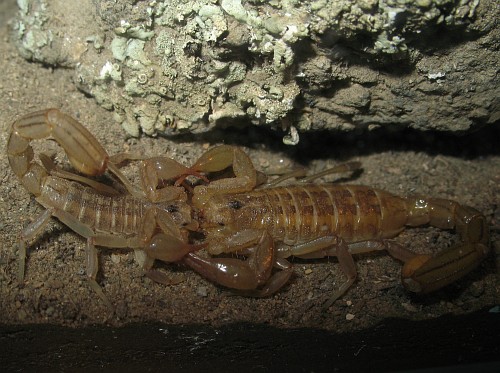
When I put two scorpions together for mating, I always keep a close eye, with a artists paint brush in my hand to break the couple apart, and a water spray can nearby (which also helps to break up a fighting couple). Anyway, those precautions where not needed. After the male had ran away, he started to explore the environment a bit more, waving its tail robot like, with short shocking motions. It moved underneath a stone, into a tunnel the female had made, and soon it's claws showed up from underneath the stone on the other side. All the time the female stayed into the same place, almost looking like it was stunned. Slowly the male moved out from underneath the stone, and walked in the direction of the female. The male bumped into the female, grabbed her pincers, and the mating dance (promenade à deux) started.
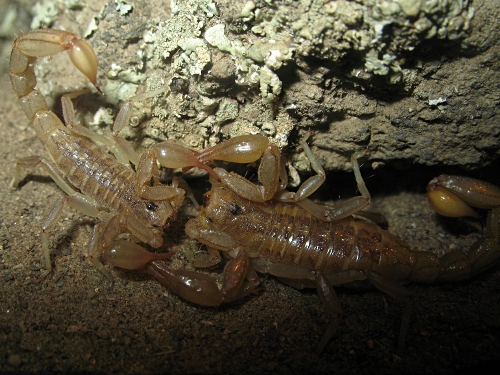
In the above photos you can clearly see that the male is of a lighter color compared to the female. This is partially because it recently cast-off its exoskeleton (molting), and the new exoskeleton hasn't got its final color yet. But also, in my experience, the males are slightly lighter of color compared to the females. Also note that the female's body looks more round, while the male's body looks more elongated.
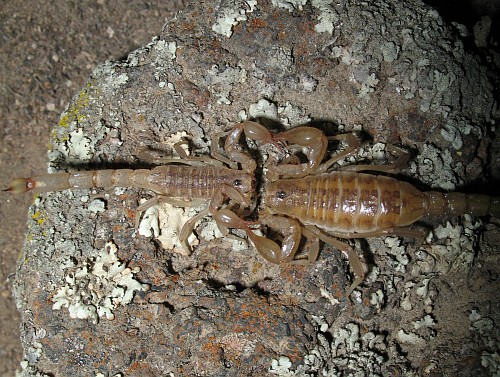
After a few minutes the male had pulled the female on top of a flat stone. I was expecting that the actual mating would take place on top of this stone, since it was nice flat and there was plenty of space for the scorpion couple to move around. But, surprise, the male decided that the underside of the stone above the substrate was a much better spot.
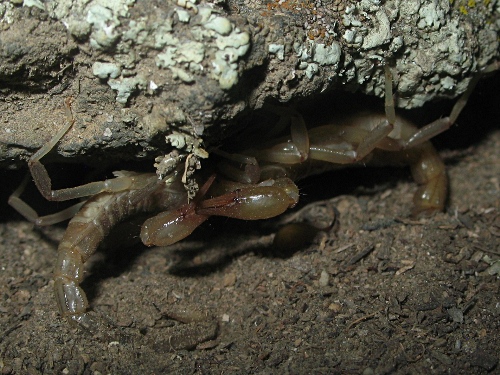
So the actual mating took place upside down, on the underside of the ston, and was over in much less time than expected: the whole process, from the start of the promenade à deux until the breaking up took about 10 minutes.
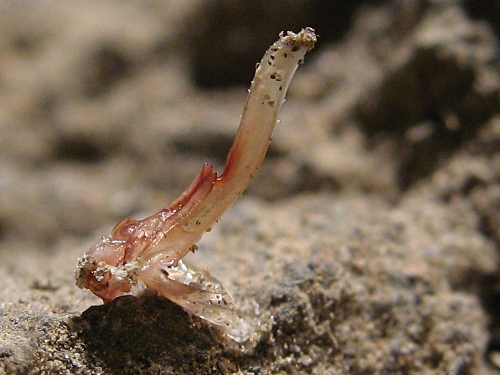
I captured the male in a small plastic cup, and put it back in its own enclosure. After that I carefully picked up the stone and placed on my desk in order to make a close-up photo of the spermatophore, which the male had attached to the underside of the stone.
I have no idea of how long it will take before I'll see scorpion babies. A female of the same species, wild collected near El Limón Totalco the 20th of August, 2005, gave birth around the second of July, 2006. Since female scorpions are able to store sperm for some time, I guess this was what happened in this case.